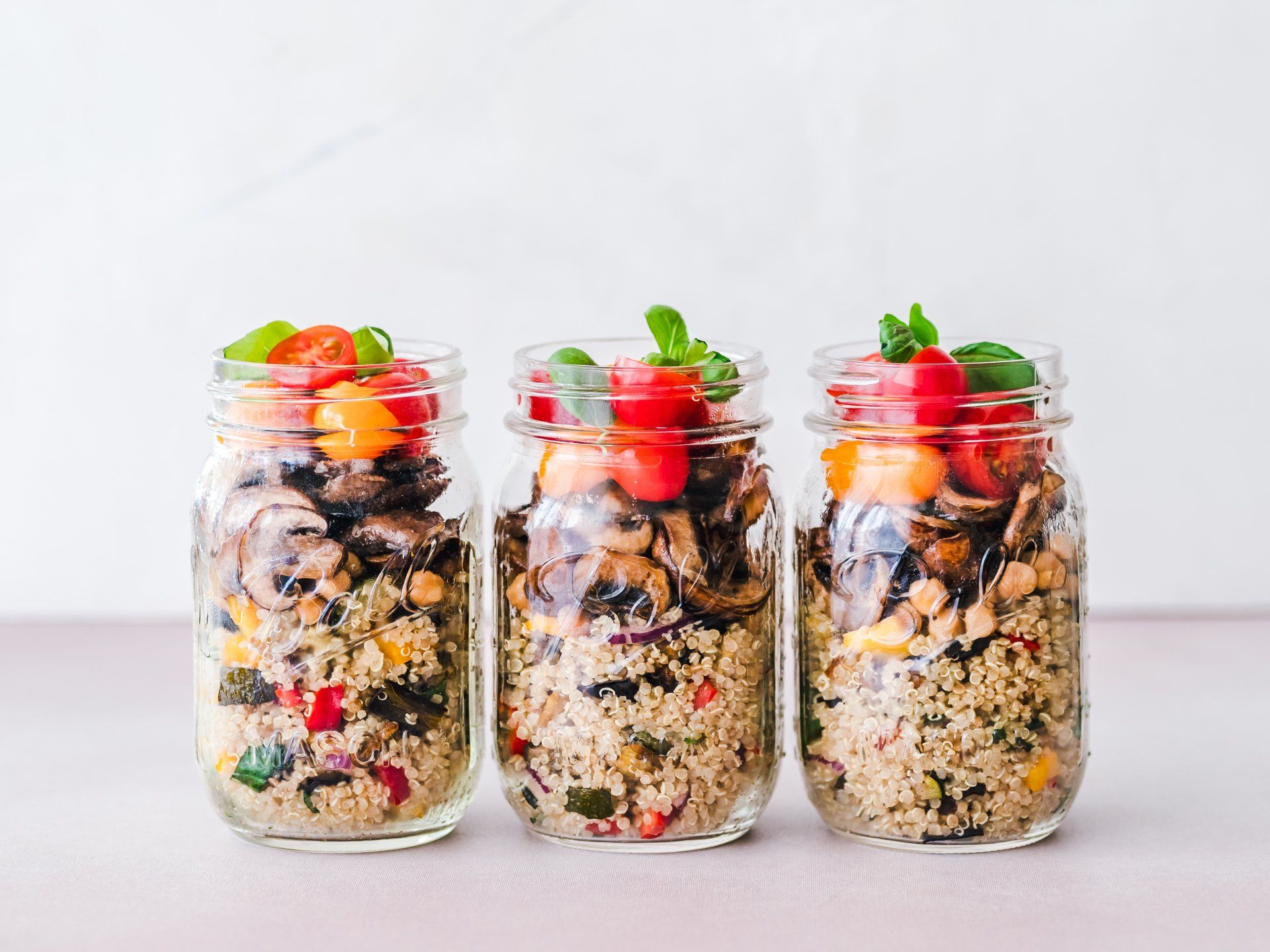Why a Slow Carb Diet Might Work Better for You Than a Low Carb Diet
Have you jumped on the low carb or keto bandwagon? If you’ve been trying to drop some weight, improve your blood sugar, or even lower your cholesterol, chances are you’ve heard about the very low carbohydrate Keto Diet. While this style of eating might work well for some, it’s not for everyone. Here’s what you should know about keto, and why you might want to consider a “slow carb” diet over a very low carb diet.
What is a keto diet?
The keto (short for ketogenic) diet is a very low carb diet that’s been taking the country by storm. Those who swear by it report success with weight loss (without feeling hungry or deprived), as well as increased energy. Often there’s an added bonus of improved in blood sugar, triglycerides and blood pressure.
Here’s how it works: When you limit carbs, your body can no longer use glucose as a source of fuel. Instead, it produces an alternative fuel called ketones, from your body’s fat stores. Many people do lose weight and that, along with minimal carbs in your diet, also lowers glucose levels. As long as you continue to limit your carbohydrate intake you’ll stay in ketosis and burn ketones. What’s not to love, right?!
Keto is more than just limiting pasta and potatoes though. When you’re eating keto, you must limit your daily carbohydrate intake to about 5% of your total calories, while bumping up your fat intake to as much as 80%. The rest comes from protein.
To put that 5% of calories from carbs in perspective - if you normally eat 1600 calories a day, you can only eat about 20 grams of carbohydrate for the entire day. One slice of whole wheat bread, a cup of fresh berries, or ½ cup of sweet potato each have about 15 grams of carbohydrate, so if those healthy foods are off limits on a keto diet, you can safely assume cookies and ice cream are a no-no.
Could that really be good for you?
If you’re attracted to the idea of a keto diet because you have visions of sizzling bacon dancing in your head, stop right there. It’s true that you can force your body into ketosis by eating lots of bacon, butter and heavy cream and cutting out carbs. You might see some weight loss, but you may also see your cholesterol skyrocket. Eating those saturated fat-rich foods also causes more inflammation in your blood vessels and throughout your body, which further increases your risk of heart disease as well as cancer and diabetes.
A healthy ketogenic diet includes good-for-you-fat and protein sources. That means meals are based around lots of avocados, nuts, seeds, olives, and olive oil for your fats, and salmon, grass-fed beef, and eggs for proteins. While most fruit is too high in carbs, vegetables like leafy greens, mushrooms, cauliflower and cucumbers get the green light, so they can, and should be eaten frequently. However, even if you’re careful about adding some vegetables to each meal, a major downside of the keto diet is that it tends to be low in fiber. It’s not uncommon to deal with constipation on this diet.
The question is – can people maintain this way of eating and continue to enjoy the health benefits? Long-term studies on keto for weight loss are limited, but some short-term research studies have shown positive results. In a 10-week study by Virta Health in San Francisco, researchers found that the diet was effective in reducing weight, glucose level and medication use in people with type 2 diabetes. The study will run for 5 years, so time will tell more about the long-term benefits.
What are slow carbs?
As easy as it is to jump on the keto train, it’s even easier to get derailed when you get tired of salmon and avocado. Most people are more successful in sticking to a weight loss plan when there are more options and fewer restrictions. As an alternative to the keto diet, dietitians often recommend a reduced carbohydrate diet that swaps “slow carbs” for refined carbs (like bread, most cereals, pasta, white rice, and desserts).
Slow carbs are high-fiber carbohydrate foods that have a low glycemic index. That means they’re digested and absorbed more slowly. They include foods like dried beans/legumes, whole ancient grains like quinoa, farro, or sorghum, dairy foods like plain Greek yogurt, cottage cheese, and a much wider range of vegetables and fruits.
Proteins aren’t limited to the higher fat ones, so lean proteins like chicken, turkey, or shrimp are good choices on this diet. It’s still recommended that you choose heart-healthy and anti-inflammatory unsaturated fats like olive oil, nuts, seeds and avocados.
The major advantage to a slow carb diet is the variety. Diets that include a wider variety of foods and food groups are more nutritionally balanced and let’s face it – they’re more interesting. The other benefit of eating more low glycemic carbs is that most of them are plant foods. All plants provide fiber, vitamins, minerals, and antioxidants. Fiber fills you at a very minimal calorie cost. It’s also important for a healthy digestive tract and gut microbiome. The vitamins and antioxidants in plant foods help to fuel your body and protect your cells from oxidative damage.
Low glycemic diets may also improve something called first-phase insulin response. It’s a measure of how much your insulin spikes in the first few minutes of eating. A reduced first-phase insulin response is often an early sign of diabetes.
The bottom line
No matter how your friend, neighbor, or gym buddy eats, it’s important to remember there’s no such thing as a one-size-fits-all diet. Your chances of sticking to a healthier eating plan will be so much better if you find one that works for you. Whether it’s low carb, slow carb or something else, your diet has to include foods you enjoy eating, and are good for you, so you feel good.
References
Abbasi J. Interest in the ketogenic diet grows for weight loss and type 2 diabetes. Jama. 2018 Jan 16;319(3):215-7.
Glycemic index food lists and explanation. Verywell Fit. https://www.verywellfit.com/glycemic-index-food-lists-2242513. Updated April 16, 2019. Accessed May 4, 2019.
Ketogenic diet: Is the ultimate low carb diet good for you? Harvard Health Publishing Harvard Medical School. https://www.health.harvard.edu/blog/ketogenic-diet-is-the-ultimate-low-carb-diet-good-for-you-2017072712089 . July 27, 2017. Accessed May 4, 2019.
McKenzie AL, Hallberg SJ, Creighton BC, Volk BM, Link TM, Abner MK, Glon RM, McCarter JP, Volek JS, Phinney SD. A novel intervention including individualized nutritional recommendations reduces hemoglobin A1c level, medication use, and weight in type 2 diabetes. JMIR diabetes. 2017;2(1):e5.
‘Slow carbs’ and the truth about low carb diets. Cleveland Clinic. https://health.clevelandclinic.org/slow-carbs-and-the-truth-about-low-carb-diets-video/. April 5, 2016. Accessed May 4, 2019.












